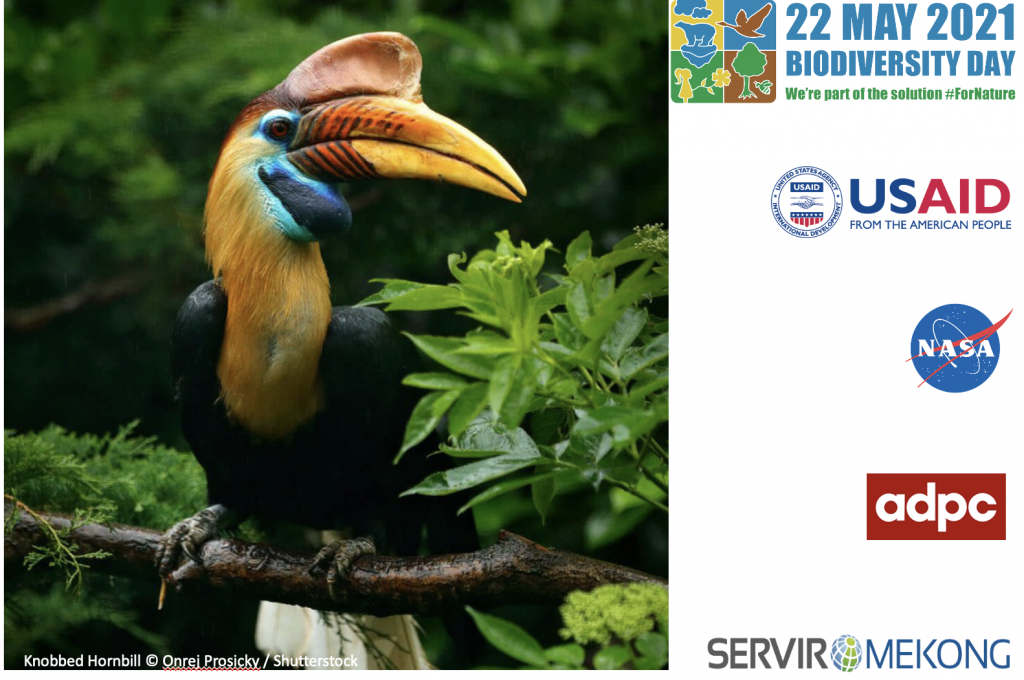SERVIR-Mekong Supports Biodiversity Conservation using its Forest Alert Tool

“Biodiversity is the greatest treasure we have… Its diminishment is to be prevented at all cost”
- Thomas Eisner, ‘Father of Chemical Ecology’ and a world-renowned authority on animal behavior, and evolution.
On the occasion of International Day of Biological Diversity, we look at the interrelationships between rich biodiversity and healthy forest ecosystems and highlight the role of SERVIR-Mekong in forest conservation in Cambodia.
Forests are critical to conserving biodiversity. According to UN estimates, they are home to millions of species of plants, animals and insects: approximately 80% of the planet’s biodiversity is believed to depend on healthy forest ecosystems. Tropical forests are particularly rich in species. While covering only about 10% of the total terrestrial surface, they are home to considerably more than 60% of all terrestrial and freshwater biodiversity.
Forest cover all over the world, particularly in Asia, is declining. Declining forest cover poses a threat to the rich biodiversity that thrives within it. Data from the Ministry of Environment, Cambodia shows that Cambodia experienced a significant reduction in forest cover from 73.4 percent in 1965 to 46.86 percent in 2018. Deforestation also releases vast amounts of greenhouse gases into the atmosphere, reduces water quantity and quality, and adversely impacts the livelihoods of local communities and indigenous people.
SERVIR-Mekong, a regional initiative of USAID and NASA, in collaboration with the Applied Science Team from Oregon State University has teamed up with USAID Greening Prey Lang to address some of these problems by developing the Cambodia Protected Area Alerts System (Forest Alert Tool) - a remote sensing platform designed to monitor near real-time forest changes and external threats such as forest fires within the Prey Lang Extended Landscape in Cambodia. The Prey Lang Extended Landscape is home to numerous protected areas in Cambodia, some of the country’s last old-growth rainforest, endangered wildlife and indigenous communities. According to a 2015 USAID funded survey the Prey Lang Extended Landscape supports an impressive range of species - including 55 listed species that are classified by the International Union for Conservation of Nature (IUCN) as threatened.

The hog badger (Arctonyx collaris) is one of the many species that live in Prey Lang’s forests. It is listed as Vulnerable by the IUCN. Image Credit: Gary Kinard / Flickr
Once fully operational, the Cambodia Protected Area Forest Alert System will equip the Cambodian Ministry of Environment with “eyes in the sky” that will enable them to remotely monitor an area of 6.2 million hectares from their desktops. Forest officials can use this information to prioritize their scarce resources for more efficient patrol planning to support forest conservation, thereby ensuring the survival of the biodiversity that thrives within it.
This is one of the many ways in which SERVIR-Mekong harnesses space technology and open data for forest protection and biodiversity conservation. Visit our website to know more.



